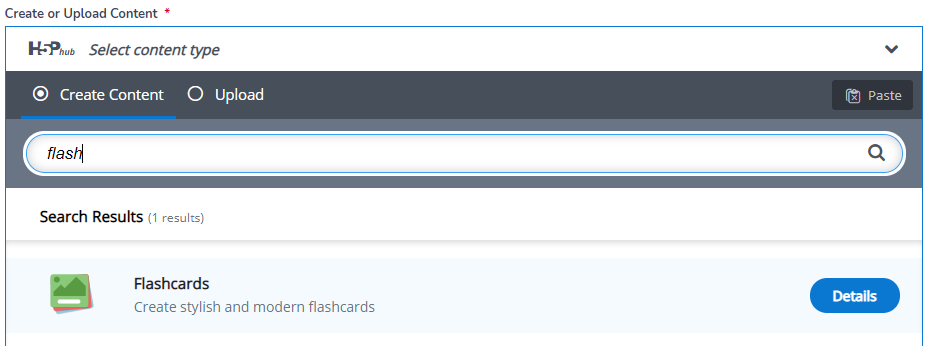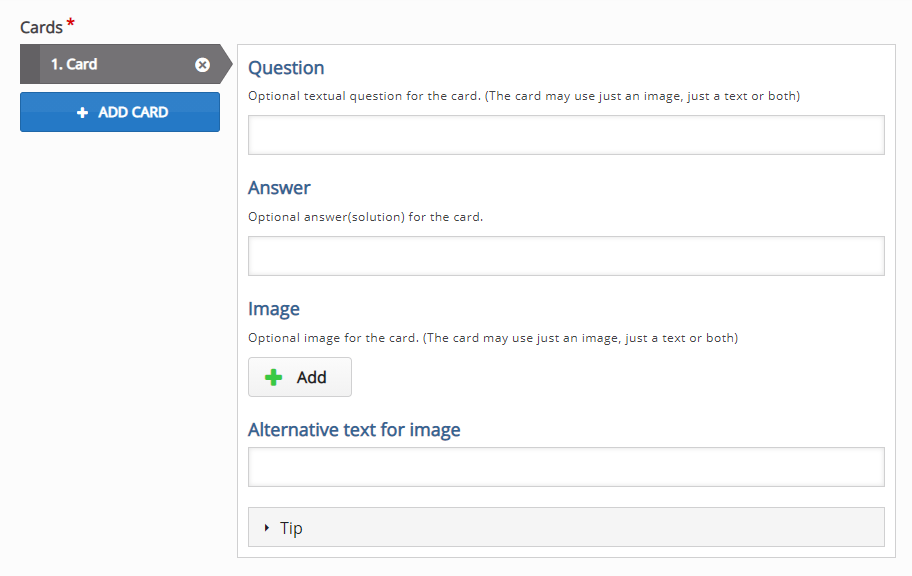Create flashcards
What are flashcards?
Flashcards are cards that are used for testing and improving memory through practised information retrieval. Flashcards are two-sided, with the prompt on one side and the information about the prompt on the other. Content on flashcards may include names, definitions, concepts, formulae or procedures. Flashcards are grouped together in a collection of information that students need to remember, learn, and master. H5P flashcards are a digital version of the traditional paper-based flashcards (also known as index cards) that you may be familiar with using to study, but these have the added ability to check if students have entered a valid response.
How do flashcards assist learning?
Flashcards are a commonly used study tool because they allow students to test and improve their basic retention of information through the repetition (or rote learning) of the cards. Students who have a basic understanding of terminology and concepts are more likely to move to more complex conceptual application and problem solving as they have a foundational understanding to draw from. More recent techniques (like the Flashcards-Plus method) deepen student understanding by asking students to reword the concepts, cognitively rethinking the flashcard content in new ways and deepening their understanding. The following video explains how to create and effectively use flashcards to improve learning.
Steps
There are several simple steps to creating an H5P flashcard interactive.
- Open the H5P content library. Within MySCU, you can do this by clicking Build Content > H5P content.
- Click on Add Content.
- Find Flashcards from the list or use the search bar to find it (please note there is also a simpler version of flashcards, called Dialog Cards).
- Each card has a question and answer which corresponds to the prompt and the information about the prompt respectively.
- You can add an optional image or a tip to aid student retention of the flashcard, but these are not essential.
- Check whether students are required to enter a response or not to view the answer. If there are many concepts that are completely new to students, it may be less frustrating for them to leave this unticked.
- Save the flashcard to test it out, or add more questions and answers as required.
- Once you have completed your H5P flashcard, you can add it as a link or embed it the same as any H5P.
The video below walks through the process from conception to the finished product.
References
Brainscape (n.d.) The origins and history of flashcards. Retrieved March 15, 2021, from https://www.brainscape.com/academy/history-of-flashcards/
Golding, J. M., Wasarhaley, N. E., & Fletcher, B. (2012). The Use of Flashcards in an Introduction to Psychology Class. Teaching of Psychology, 39(3),199-202. https://doi.org/10.1177/0098628312450436
Senzaki, S., Hackathorn, J., Appleby, D. C., & Gurung, R. A. R. (2017). Reinventing Flashcards to Increase Student Learning. Psychology Learning & Teaching, 16(3), 353-368. https://doi.org/10.1177/1475725717719771


